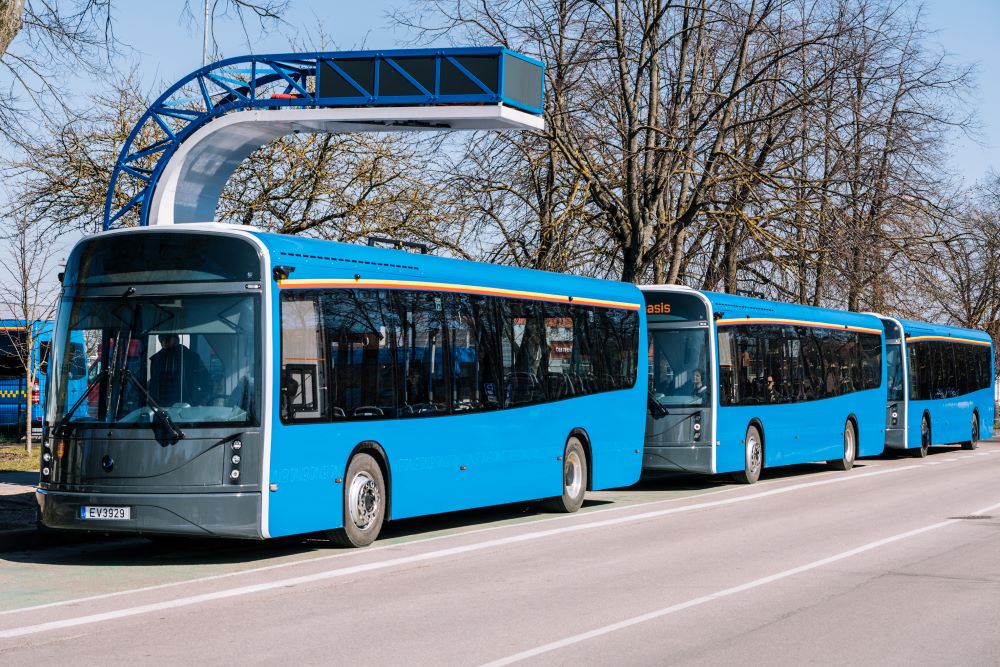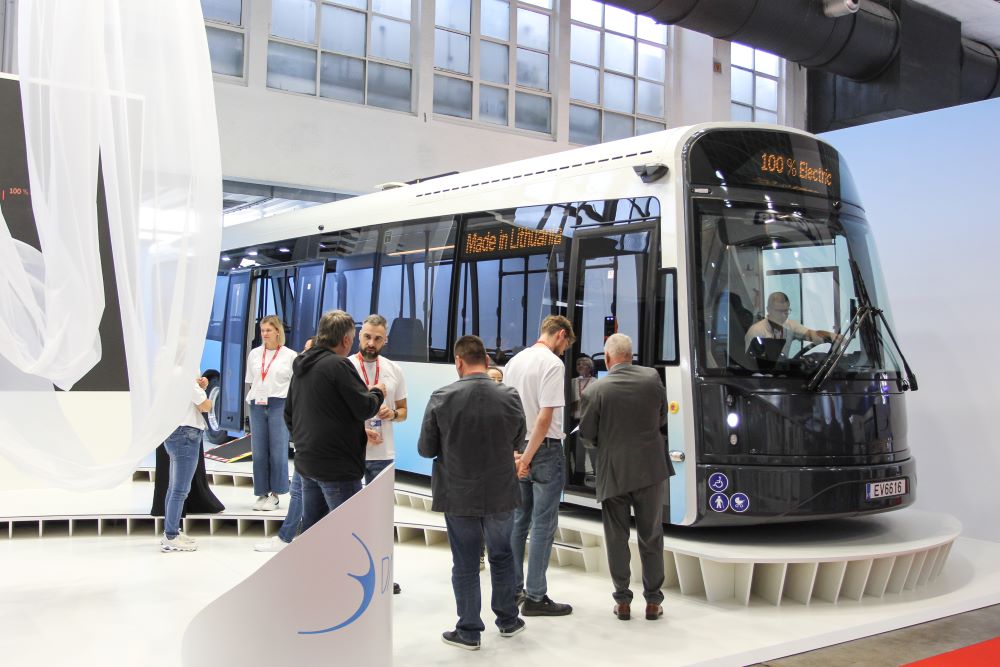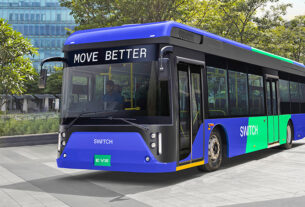Klaipėda-based Vėjo projektai, a group of companies offering advanced electric public transport solutions, made its debut at Busworld 2023 in Brussels, Belgium. The group showcased its light, quiet, innovative and 100% electric Dancer buses at the world’s most important events for commercial passenger transport.

“Busworld 2023 is the premier event to reveal the future of commercial passenger transport. The
concept of the show is in line with our vision – we want to make a difference in the electric bus sector, so the opportunity to make our debut here is very important. It is a good opportunity to meet industry

leaders, potential partners, and customers. Visitors to the stand learnt a wealth of information that we aim to change the way they think about the next generation of electric buses,” says Alvydas Naujėkas, CEO of Dancer Buses.
Introducing two advanced models
Visitors to the Klaipėda Group stand were able to find out all about two technologically advanced, 100% electric Dancer bus models – the fast-charging Dancer (FC 75) and the long-distance Dancer (LR 530). The low-floor electric buses produced and operated in Lithuania have already saved almost half a million tons of CO2 emissions.

The fast-charging Dancer (FC 75), designed for dynamic city driving, is characterized by its ultra-fast charging time of just 8 minutes. The bus is also extremely economical, with an average energy consumption of 0.72 kWh/km, allowing it to cover up to 100 km on a single charge. These technical features, together with fast charging, ensure that the bus is easy to use in the city.
The long-range Dancer (LR 530) model has an impressive range of 530 km on a single charge. This
endurance is ensured by the ultra-high-capacity NMC lithium-ion batteries. Recharging to 100% takes between one and four hours, making it easy for operators to plan public transport schedules.

Dancer aims to become a competitive contender in the 12-metre bus category, competing with both European and Chinese manufacturers. The company is focusing heavily on weight reduction and body construction and is aiming for the highest level of functionality.
“We have been looking for new solutions for the body structure, so Dancer engineers have developed a new generation of composite materials in collaboration with leading universities and well-known wind turbine manufacturers. The body is strong and lightweight, and the use of recycled plastics from the
oceans ensures sustainability. Composite materials have replaced metal in many places, including the chassis,” says Naujėkas.
Reveal the multifaceted benefits
Visitors to Busworld 2023 in Brussels were able to see and experience the benefits of Dancer buses up close. All these technologies have been tried and tested in real-life conditions, as Dancer buses have
been on the streets of Klaipėda for three years.
Extremely light and economical. “The use of composite materials in the Dancer’s construction, which are much lighter than steel, has reduced the weight of the bus. The weight of the bus with batteries starts from 8.6 tons. By comparison, the industry average in the 12-metre electric bus category is between 12 and 14 tons. The lower weight makes Dancer buses more dynamic and less energy intensive.
Made of advanced materials. The Klaipėda-based company works with wind turbine wing engineers and manufacturers to develop advanced composite materials. These materials eliminate the need for anti- corrosion coating and have extended the life of Dancer electric buses to 30 years. As part of its sustainability commitment, recycled plastics are used in the bus body construction.
Adapted for extreme conditions. Both the FC 75 fast-charging bus and the LR 530 long-range bus are designed to operate in extreme temperatures. “Dancer electric buses can be operated in temperatures ranging from -24 to +38 degrees Celsius.
State-of-the-art remote monitoring system. Dancer’s monitoring technology is distinguished by its unique engineering solutions. The most important of these is real-time remote monitoring. Buses in operation are monitored in real-time – 24 hours a day, seven days a week. Every two milliseconds, a system that processes more than 1,000 signals automatically performs predictive diagnostics and remote calibration. The resulting data enables rapid development of improvements that are implemented remotely through software upgrades. Thanks to these technologies, the Dancer buses in Klaipėda, now in their fourth year of operation, have achieved outstanding efficiency results




